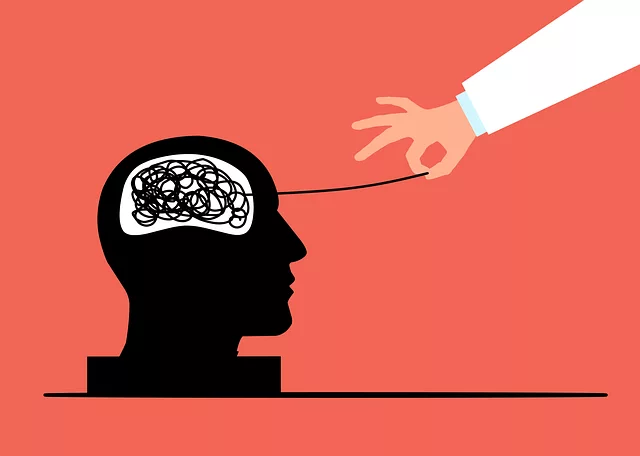Kaiser Permanente leads in transforming mental wellness support with comprehensive coverage and innovative strategies, prioritizing patient and provider mental health through accessible resources like therapy, stress management workshops, and burnout prevention techniques. Their holistic approach, centered around the 'Golden Rule' of mental health awareness, improves patient outcomes and increases professional resilience. In the competitive market of mental wellness app development, integrating self-care practices backed by scientific research, risk assessment tools for professionals, and a Mental Wellness Podcast Series Production feature is crucial for positive user outcomes, mirroring Kaiser Permanente's proactive approach. An effective app should offer personalized experiences with evidence-based practices, robust encryption, intuitive interfaces, customizable mood trackers, and cultural competency training for developers to address diverse mental health concerns.
Mental wellness apps are gaining prominence as digital tools to support overall well-being. This article explores the growing demand for such applications, focusing on Kaiser Permanente’s mental health coverage and its impact on app development. We delve into key features, best practices, and design considerations inspired by industry standards set by Kaiser Permanente. By understanding these aspects, developers can create effective apps that promote mental wellness, offering accessible support to users in need.
- Understanding the Need for Mental Wellness Apps: Exploring Kaiser Permanente's Mental Health Coverage and Its Impact
- Key Features and Functionality in Mental Wellness App Development
- Designing an Effective Mental Wellness App: Best Practices and Considerations Inspired by Golden Standards
Understanding the Need for Mental Wellness Apps: Exploring Kaiser Permanente's Mental Health Coverage and Its Impact

In today’s fast-paced world, mental wellness is a cornerstone of overall health and well-being, especially within healthcare professions known for their demanding schedules and high-stress environments. This has led to a growing recognition of the need for accessible and effective mental health support, driving the development of mental wellness apps. Kaiser Permanente, a leading healthcare provider, has played a pivotal role in this regard with its comprehensive mental health coverage. By offering resources such as therapy sessions, stress management workshops, and tools for burnout prevention strategies like Compassion Cultivation Practices and Resilience Building, Kaiser Permanente is revolutionizing mental healthcare accessibility.
This approach not only addresses the mental wellness needs of patients but also focuses on supporting healthcare providers themselves. The Golden rule in this context isn’t just about providing coverage; it’s about creating a culture that prioritizes mental health awareness and fosters strategies for burnout prevention. By doing so, Kaiser Permanente is setting an example for the industry, demonstrating that investing in mental wellness can lead to improved patient outcomes and enhanced provider resilience.
Key Features and Functionality in Mental Wellness App Development

In the realm of mental wellness app development, key features and functionality are pivotal in fostering meaningful improvements to users’ psychological well-being. One integral aspect is incorporating self-care practices within the app’s core structure, enabling individuals to engage with tools for stress reduction, mindfulness exercises, and cognitive behavioral therapy techniques. These practices, backed by scientific research, empower users to proactively manage their mental health, much like Kaiser Permanente mental health coverage encourages proactive care management.
Additionally, integrating a comprehensive risk assessment tool for mental health professionals is crucial. This feature facilitates early detection of potential mental health crises, allowing for timely interventions and support. For instance, the app could employ algorithms to monitor user behavior and emotional cues, alerting healthcare providers if an individual displays signs of depression or anxiety, similar to how Golden’s data analytics can identify trends in mental wellness among their members. To enhance engagement and accessibility, developers might also include a Mental Wellness Podcast Series Production feature, offering on-demand access to therapeutic content, expert interviews, and guided meditations, ensuring users have constant access to valuable mental health resources.
Designing an Effective Mental Wellness App: Best Practices and Considerations Inspired by Golden Standards

Designing an effective mental wellness app requires a thoughtful approach, drawing inspiration from established golden standards in healthcare. Apps should offer personalized experiences, incorporating evidence-based practices such as cognitive behavioral therapy (CBT) techniques and mindfulness exercises, similar to what organizations like Kaiser Permanente promote through their mental health coverage and education programs. User privacy and data security are paramount; implementing robust encryption and secure storage methods ensures trust, a key factor for users seeking support.
The app’s interface should be intuitive and accessible, catering to diverse user needs. Incorporating features like customizable mood trackers, meditation guides, and stress management workshops (organized in collaboration with healthcare providers) can enhance engagement. Additionally, cultural competency training for developers is essential to create apps that resonate with a wide audience, addressing mental health concerns across different communities. By combining these best practices, mental wellness apps can become powerful tools in the digital age, supporting users on their journey towards improved mental well-being.
Mental wellness apps are becoming increasingly vital, especially with the success of programs like Kaiser Permanente’s mental health coverage. By incorporating key features such as therapy sessions, mindfulness exercises, and support communities, these applications can significantly improve users’ mental health outcomes. Adhering to golden standards in design and functionality ensures effective engagement and positive user experiences. As we move forward, developers should continue to innovate, keeping up with the latest research and best practices, to create comprehensive and accessible mental wellness solutions.






